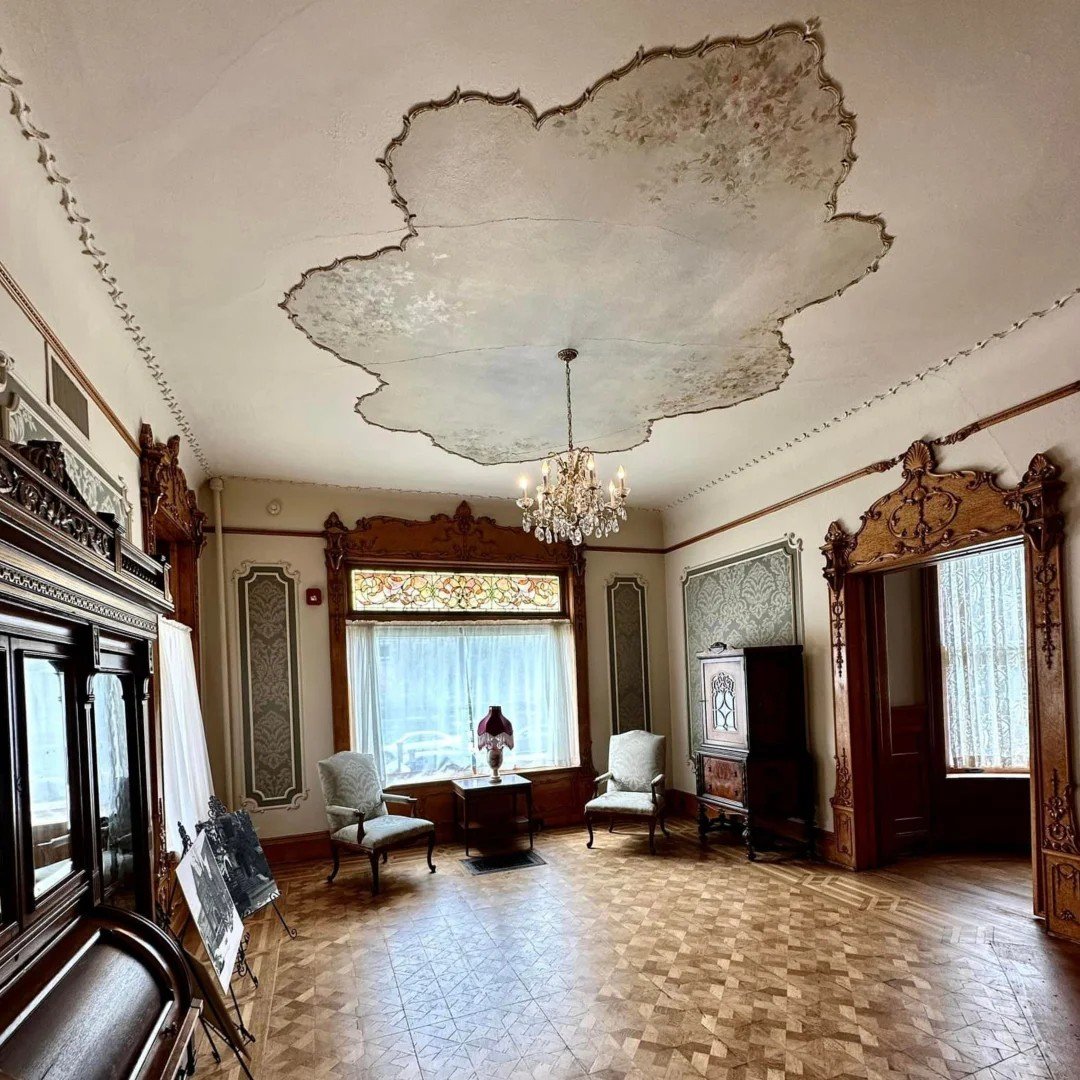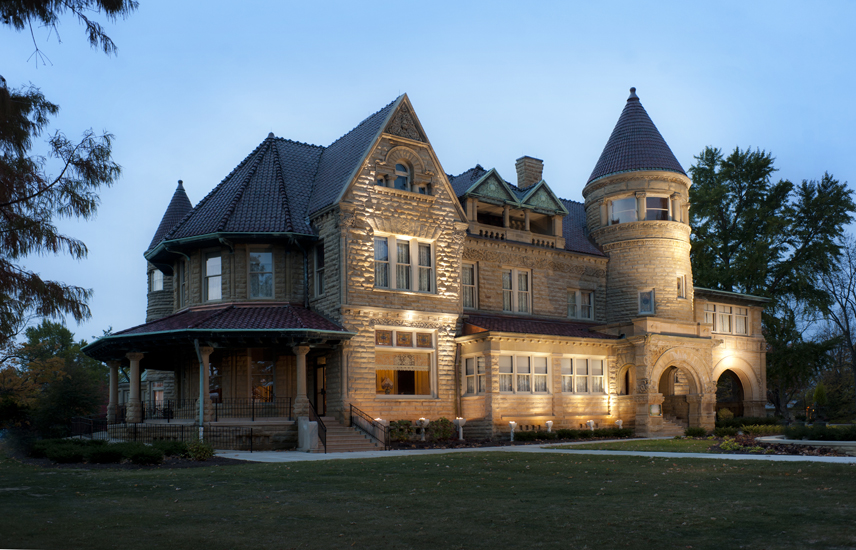Fall does strange things to Fort Wayne. The air thins, the light goes copper, and the oldest houses start to look awake again. They don’t frighten anyone; they just remind you that time sticks around longer than you’d think.
In the spirit of the season, here are five of the city’s landmarks that carry that quiet October tension: elegant, a bit eerie, but very much alive.
Bell Mansion (420 W Wayne Street)

via @visitfortwayne
Built in 1893 for Robert and Clara Bell, this Romanesque masterpiece by Wing & Mahurin still dominates West Wayne Street.
Rough-hewn Indiana limestone, stained glass, and massive arches make it the city’s architectural showpiece. It spent years as both a residence and a funeral home (in fact, the funeral home operated on the site for about 93 years).
These days it hosts weddings and community events, but the atmosphere hasn’t changed much: grand, slow, a little heavy after dark.

via thebellmansion.com
Fact highlight: Robert Bell was a prominent attorney and state senator, and his wife Clara Wolfe Bell co-founded the Fort Wayne Museum of Art.
The Chief Richardville House (5705 Bluffton Road)

via fwhistorycenter.org
Built in 1827 for Jean Baptiste de Richardville (also known as Chief Richardville), this landmark is recognized as one of the oldest Native-American houses in the Midwest and is a National Historic Landmark.
It combines the I-house form with Greek Revival touches — relatively plain at first glance, then the hand-hewn beams, the symmetry, the hush of heavy history become evident. Stand there at sunset, and the place feels patient, like it’s seen too many seasons to bother reacting to one more.
Fact highlight: U.S. government funds ($600) combined with Richardville’s own funds to build it, costing about $2,200 at the time.
The Brookside Mansion (2701 Spring Street)

via mkmdesign.com
On the grounds of University of Saint Francis, Brookside (also known as the John H. Bass Mansion) looks almost theatrical: sandstone walls, carved oak, a roofline made for clouds. According to records, the mansion was built in 1902-1903 for industrialist John H. Bass, after an earlier building burned. Maybe that’s why it carries such weight. In fog, the stone darkens to slate and the whole thing goes still.

via mkmdesign.com
Fact highlight: The residence of John H. Bass (a major local industrialist) from 1902–1944, now listed on the National Register of Historic Places.
The Swinney Homestead (1424 W Jefferson Boulevard)

via historycenterfw.blogspot.com
Colonel Thomas W. Swinney’s 1844 farmhouse sits behind the trees of Swinney Park. The original construction began in 1844-45, with a significant addition in 1885 adding Victorian/Italianate elements. The bones: early Federal style, later refinements; the uneven floors that creak underfoot. You can walk through and feel how the city grew around it through the decades.
Fact highlight: Swinney donated much of his land to the city (which became Swinney Park) and the house is listed on the National Register of Historic Places.
Sion Bass House (509 W Washington Boulevard)

via booking.com
This mid-19th-century transitional Italianate stands tall in the West Central district. It was built by John Grimes in 1842 and acquired by Sion Bass in 1854; the house is noted for its early use of Italianate style in Fort Wayne (paired brackets, wide eaves, a cupola). Built for Colonel Sion Bass, Civil War veteran and industrialist. By day it projects calm authority; but when lamplight hits those upper windows, its symmetry takes on a cinematic quality that stops you mid-step.
Fact highlight: The house is listed on the National Register of Historic Places as part of the West Central Neighborhood.
Old Homes with October Mood
Their atmosphere comes not from legends, but from craftsmanship that refuses to fade. Fort Wayne’s oldest homes show how history can shift tone with the season: warm by day, quietly haunting by night.
Want to see more of Fort Wayne for yourself? Reach out to the RFG today.



